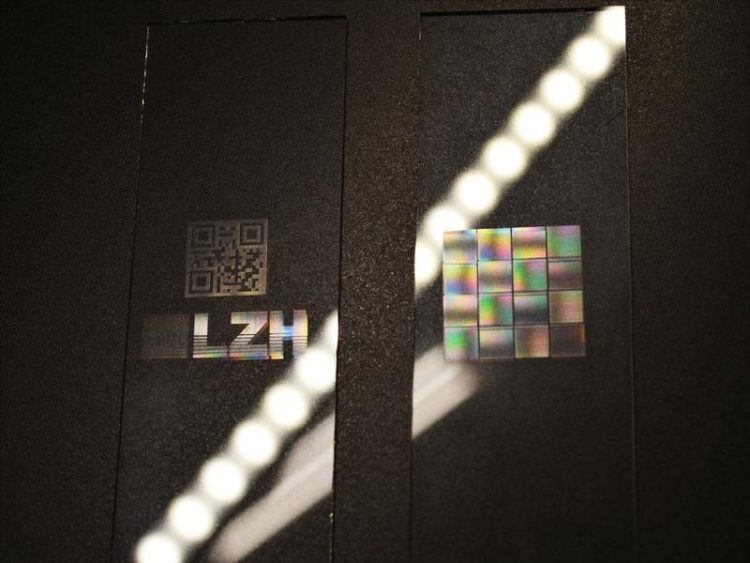Product piracy: glass marking fights counterfeiting

LZH logo and chessboard pattern with diffractive structures. Photo: LZH
Using a robust and industrially established marking laser, it will be possible to both individually and quickly mark products with a distinct certificate of authenticity.
This can be done during the packaging process. This is the vision of the project GLaSIDeE. Scientists at the LZH are working on a process for anti-counterfeit marking on both flat and curved glass surfaces.
Unique fingerprints
The laser marking process can be used to generate decorative writing, a number, or a two-dimensional bar code directly in the glass. The markings are only a few nanometers deep.
Flexibility is the main advantage, since each part can be individually marked, for example with a serial number, without effort or extra costs.
Up to now, there has been no clear identification process for markings on glass. Thus, in this project a special process should be developed with which each part is given its own individual fingerprint. The LZH is also developing a reading process for invisible markings.
In combination with each other, they will be able to reach a higher anti-counterfeit rate than conventional processes.
The project „Glass Marking using the Laser as a Safety, Identification and Design Element“ (GLaSIDeE) is subsidized by the German Federal Ministry for Economic Affairs and Energy within the Central Innovation program for Middle-sized Businesses.
Media Contact
More Information:
http://www.lzh.de/All latest news from the category: Materials Sciences
Materials management deals with the research, development, manufacturing and processing of raw and industrial materials. Key aspects here are biological and medical issues, which play an increasingly important role in this field.
innovations-report offers in-depth articles related to the development and application of materials and the structure and properties of new materials.
Newest articles

Trotting robots reveal emergence of animal gait transitions
A four-legged robot trained with machine learning by EPFL researchers has learned to avoid falls by spontaneously switching between walking, trotting, and pronking – a milestone for roboticists as well…

Innovation promises to prevent power pole-top fires
Engineers in Australia have found a new way to make power-pole insulators resistant to fire and electrical sparking, promising to prevent dangerous pole-top fires and reduce blackouts. Pole-top fires pose…

Possible alternative to antibiotics produced by bacteria
Antibacterial substance from staphylococci discovered with new mechanism of action against natural competitors. Many bacteria produce substances to gain an advantage over competitors in their highly competitive natural environment. Researchers…





















